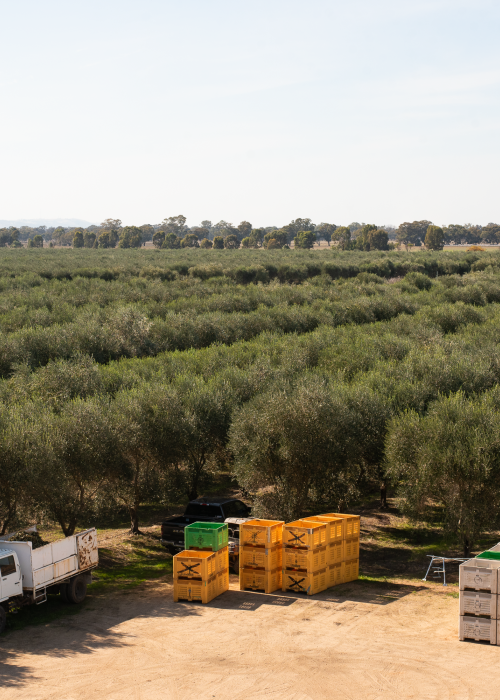Words by Jane Seymour
We’ve survived another long hot summer and finally we’ve had some rain in the Wimmera after the driest and hottest summer on record!
Incredibly, our olive trees which are 70 years old have reached a reasonable size without a drop of irrigated water.
Nature works in ingenious ways. During drought conditions the trees adapt by altering the amount of leaf surface exposed to the sun by curling inwards to reduce transpiration and thereby conserve precious moisture. The olives shrivel during the hot dry summer but nonetheless manage to hang onto the trees.

Rain is critical for us during the flowering and pollination period in November. The olive trees flower in November and are pollinated by the wind. After pollination we eagerly look for the tiny olives (no bigger than the size of a match head) on the trees.
From early summer the olives increase in size until they are fully formed, which takes about 3 months.
After reaching full size in March, the olives are green. The green olives have the most flavour but little oil. As the olives ripen from green to a yellow hue through to purple and finally black, their oil content increases.
Normally it is the last two weeks in May that the olives have the best combination of colours - green, red and black and are rich in flavour and make good quality oil. The later we pick, the higher the oil content, but the flavour can diminish, so it is a delicate balancing act to get the timing just right. Our objective is to produce the best quality oil possible.

This year we were caught a little by surprise as April turned out to be the optimum time for oil - one month earlier than previous years!
And so we got to work using an age old traditional process that preserves the integrity of the fruit and is gentle on the tree.
We put out an umbrella net about 6 metres wide to catch the fruit. We then rake the olives off the tree to avoid pulling too many leaves. From the nets the olives go into crates, and then off for processing.
Our best trees produce up to 120 kgs of olives with the least giving us only 8-10 kgs. We are proud to announce that we achieved a 20% oil production this year – a great result giving the challenging conditions.
Immediately after harvesting the pruning begins and so the cycle continues….





